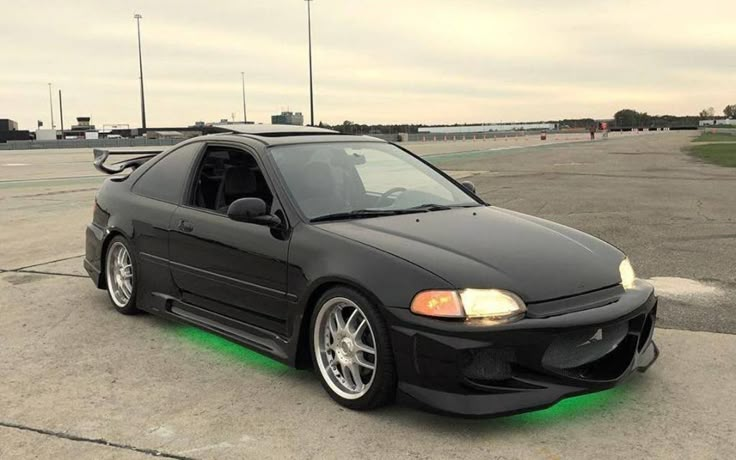The 1993 Honda Civic EJ1, a model that has earned an iconic status among automotive enthusiasts, stands at the intersection of history and the burgeoning street racing culture of the late 20th century. As we delve into the enduring debate of whether this classic vehicle is best equipped with a stick shift or an automatic transmission, we invite readers to explore the nuances that accompany each choice. With the EJ1 being a hallmark of Honda engineering, understanding its transmission options unfolds a captivating narrative that reflects driver preference, performance, and the overall driving experience.
The Manual Transmission: An Engaging Experience
Choosing a manual transmission for the 1993 EJ1 is like selecting a finely-crafted instrument, designed for those who thrive on tactile engagement and precise control. The five-speed manual gearbox allows for an exhilarating connection between driver and machine, which is vital in honing one’s driving skills. Enthusiasts who favor this option often denote a heightened sense of involvement; shifting gears becomes a rhythm, almost like a dance between man and machine.
The manual transmission’s advantage lies primarily in its responsiveness. With the ability to control gear selection directly, drivers can exploit the engine’s power band more effectively, especially in spirited driving scenarios. This becomes particularly salient when discussing the Civic’s peppy D-series engines, capable of revving high and delivering satisfying performance. In short, a manual transmission enables spirited driving while navigating twisty backroads or engaging in everyday commuting.
An interesting facet of the manual transmission is its perceived character. Many drivers develop a sentimental connection to manual shifting, viewing it as part of the vehicle’s personality. The gratifying sound of the shifter slotting into gear, paired with the unique sensations experienced during acceleration and deceleration, cultivates a sense of authenticity. Ultimately, a manual Civic is not merely a mode of transportation; it becomes an extension of the driver’s passion for automotive culture.
The Automatic Transmission: Convenience Meets Performance
On the other end of the spectrum lies the automatic transmission — an option that emphasizes ease of use over the intricacies of manual shifting. For those who prioritize convenience in urban environments or prefer a more relaxed driving style, the automatic transmission of the EJ1 can be an enticing prospect. While early ’90s automatics may not have enjoyed the same level of sophistication as today’s variants, they nonetheless offer a seamless driving experience.
A significant advantage of the automatic configuration is accessibility. Newer drivers or those less inclined to engage in the mechanics of shifting often find automatics more forgiving. The simplicity of letting the vehicle handle gear changes can be particularly appealing in stop-and-go traffic situations, where constant shifting can become tedious. This automatic experience facilitates smoother driving transitions, thus allowing drivers to focus more on navigation and less on gear selection.
Moreover, the automatic Civic still offers commendable performance, improving fuel efficiency, especially in urban settings. While classic enthusiasts may tout manual gear shifting as superior, it is essential to acknowledge that the automatic transmission can provide a pleasurable driving experience characterized by convenience and reliability.
Resale Value and Enthusiast Interest
This notion is particularly relevant in the context of today’s automotive landscape, where manual transmissions are increasingly rare. Production trends indicate a steady decline in manual options across various manufacturers, heightening the allure of the few remaining models still equipped with this traditional gearbox. In essence, those considering investment in a classic EJ1 must weigh both their personal driving preferences and the broader implications for future value.
Driving Dynamics: The Enthusiast Perspective
Beyond practical considerations and collector value, it is vital to discuss the driving dynamics inherent to each transmission choice. The manual transmission enhances the driving experience through its inherent engagement — a thinking driver’s transmission that rewards skill and intuition. For the automotive purist, the raw, unfiltered interaction with the vehicle can be exceptionally gratifying.
Conversely, the automatic transmission may temper this raw experience, but it can offer its own form of dynamism. The automatic switch allows for a different interpretation of driving pleasure — one matched with the freedom to experience the vehicle’s capabilities without the constant need for tactile manipulation. A well-tuned automatic gearbox can deliver smooth, precise shifts, making it an appealing option for daily driving or long-distance cruising.
The Verdict: Which is Best?
Ultimately, the debate over whether the 1993 EJ1 Civic should be had in manual or automatic form boils down to individual priorities. A manual transmission beckons to those who cherish an intimate connection with their vehicle. It embodies an age-old philosophy of driving that embraces skill, control, and engaged enjoyment. Conversely, the automatic transmission caters to those who prioritize convenience, ease of driving, and accessibility.
As we draw this exploration to a close, it becomes clear that the 1993 Honda Civic EJ1 stands as a remarkable representation of automotive ingenuity, regardless of transmission type. The choice between stick and automatic ultimately captures the essence of personal driving preferences, making this classic Honda a timeless discussion point for enthusiasts and casual drivers alike.
